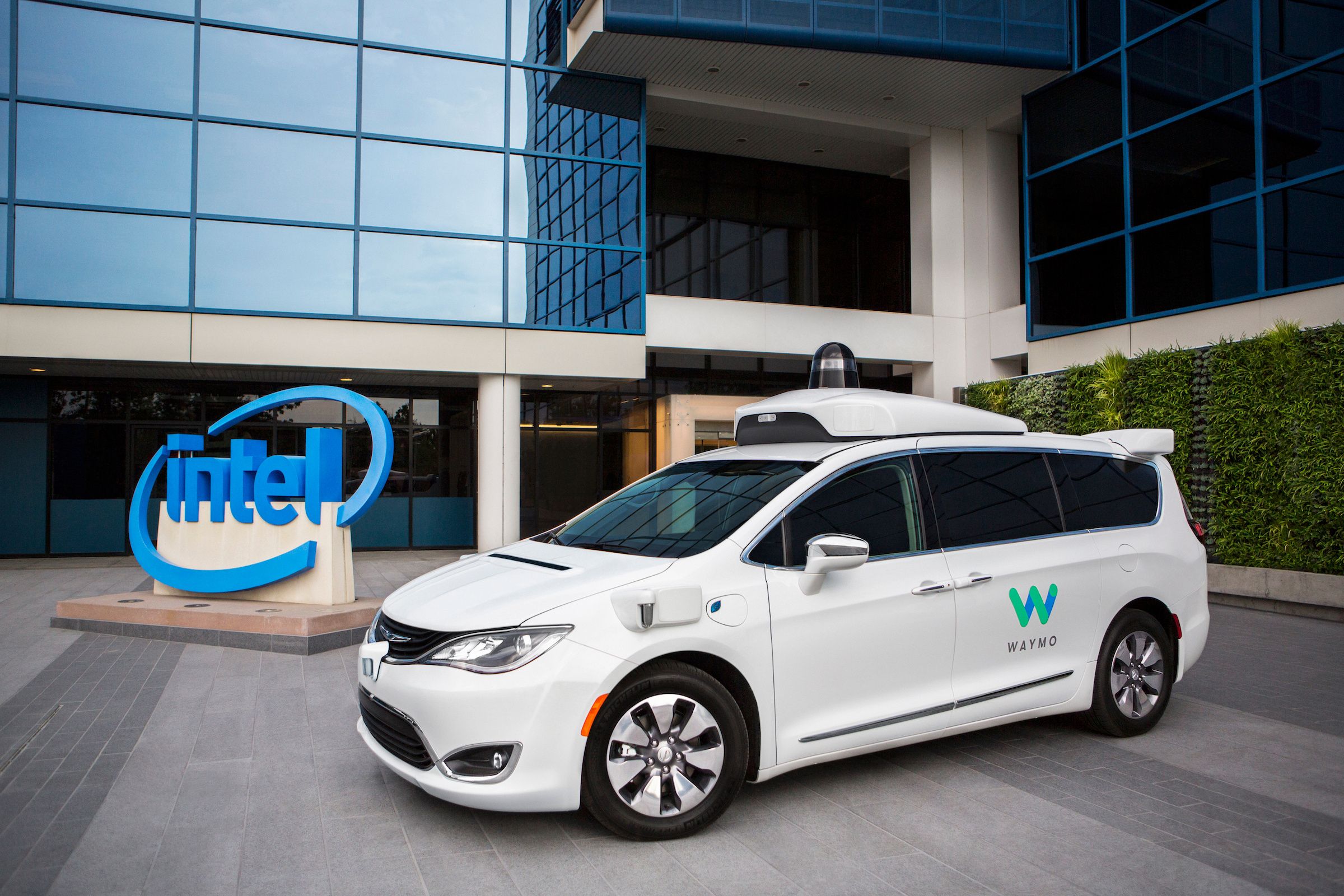Intel works with Waymo to build self-driving cars you can sleep inside
Waymo-IntelWaymo and Intel are working closely together to push the field of self-driving cars into full autonomy. So says Intel which is providing the processors inside Waymo's latest car — and potentially those in the future. The chipmaker believes that Level 4 and Level 5 autonomous cars are possible, and soon, expecting that "...almost 90 percent of Americans do every day will end within a generation," says Intel's CEO Brian Krzanich in a release.
Waymo is formerly Google's self-driving car project that spun out on its own at the end of 2016. Waymo says its used engineers in-house to build its computing power for cars including its self-driving Chrysler Pacifica minivans. But Intel's processing power can help Waymo's cars do a bit more than they can do now.
Autonomous cars are rated by levels: Level 0 means a car has absolutely no automation and a human completely controls the car. Level five is complete automation: A driver may be present but basically they're just a passenger with the car, or computer, taking over the steering, accelerating, braking, monitoring and even the fail-safe scenario.
Food safety For some people, eating at a restaurant is scary. That's especially true for people who have food allergies or diseases tied to food like diabetes or celiac. A new device, the Nima sensor, can detect gluten in minute amounts of food and send back readings in minutes. For celiacs, who have to avoid gluten, the sensor sounds like a dream come true. We decided to find out if the device works — or not.
